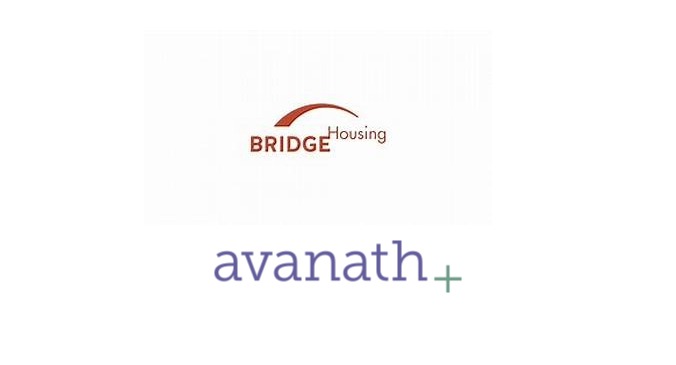Residents and prospects can now compare actual rental rates at “RentHackr.com: the best way to find out if your landlord is ripping you off.” This Facebook application allows viewers to see what actual rental rates, as opposed to quoted, are being paid in an apartment community. It displays resident move-out notices before they give notice to their apartment managers.
“It genuinely makes sense to cut everyone else out of the equation. One renter sharing with another, bringing transparency to the hell that is apartment hunting,” writes Harrison Weber of TheNext Web.com.
Residents are more savvy to computerized price-setting as hotel guests, car renters and airline customers have been for some time. 59.5 percent of apartment renters were planning to renew their leases in Q4 2011, which is an all-time low, according to the Kingsley Index.
Apartment revenue management is burgeoning in the multifamily industry, being led by RealPage’s Yieldstar and Rainmaker LRO. Many property management leaders have implemented revenue management systems and report a 3 percent or better revenue lift. What remains unknown is the percentage of lift they would have see if the same communities, under the same market conditions and circumstances, had not implemented revenue management. This remains one of the mysteries that surround the black box of a revenue management algorithm. It is a general consensus among professional managers that revenue management is on the rise, and will continue to expand in the multifamily industry.
David Atkinson, CPM, EVP of administration for Case & Associates Properties Inc., recognizes the inherent resistance of leasing staff to push rental rates and how revenue management eliminates the emotional factor in that equation. He still has reservations for implementing revenue management for Case’s 20,000 apartments.
Says Atkinson, “having studied revenue management systems, I had a sense that the software providers were retrofitting the hotel revenue management pricing model. When we interviewed some early converts to revenue management, we were alarmed at the wide deviation in pricing that could occur over a short time period: base rental rates doubled or tripled.”
As management companies move from reliance on operations management by humans versus computers, upper-level managers are seeing larger regions with expanded areas of responsibility, communities with fewer staff, and more information available than most minds can assimilate into working knowledge. It is no wonder that computerized revenue management is becoming nearly essential.
What is yield management made of?
One of the first definitions of yield management was “sell the right capacity to the right customers at the right prices.” (Smith, Leimkuhler, and Darrow 1992). Sheryl E. Kimes of Cornell University and Richard B. Chase of the University of Southern California offered an insightful, updated definition in 2007: “Managing the four Cs of perishable service: calendar (how far in advance reservations are made), clock (the time of day service is offered), capacity (the inventory of service resources), and cost (the price of the service) to manage a fifth C, customer demand, in such a way as to maximize profitability.”
Essentially, the objective of yield management is to define trade-offs. There are factors beyond the black box that must be well managed to result in profitable pricing models. That returns us to the ancient GIGO adage: garbage in, garbage out.
Lisa Gunderson, director of asset management of Bristol Development Group maintains her own revenue management references, in addition to rates her communities receive through automated pricing management. She believes “revenue management does not work for lease-up pricing, or during unexpected market impacts, such as Hurricane Katrina. She adds, “I also discovered incorrect information set up in the system during my initial audit, all suppositions would have therefore been skewed. Revenue management requires a human to assimilate and translate computer-generated prices into optimized income.”
Essential factors for effective revenue management: market intelligence
Accurate market data is critical for establishing maximized pricing. Since average pricing is an essential building block in revenue management, it is wise to revisit basic operational procedures on how information gatherers are collecting and maintaining the community market survey. If pricing is volunteered by competitors without validation, rolled-up, and progressively diluted by comparison to average pricing determined by random research through the revenue management system, the basic price premise maybe written in sand. After all, the goal is not to let competitors establish the community’s price structure. Revenue management is an excellent way to dodge any appearance of price fixing activities.
Lincoln Property Company manages apartment communities in 134 national markets and is well-known as an industry leader since 1945. “Lincoln Property Company uses Real Page’s Yieldstar and Rainmaker LRO on many of their properties for pricing recommendations,” says Jennifer Staciokas, VP of marketing and training. “Additionally, we use Market SurveyTools.com on properties to provide a checkpoint for properties that have adapted computerized revenue management. Lincoln sets prices by human review, and they diligently secret shop competitors to make sure they have precise, unabridged rate data in their surveys. For properties that are not budgeted for computerized revenue management, the market survey program provides an analysis and advice module that crunches massive data into market trends to assist in making enhanced pricing decisions.
We have great confidence in our computerized revenue management applications; when we add our teams’ experience, advanced market research, and instincts to that, it’s a winning combination,” Staciokas explains.
Jackie Impellitier, operations manager at ZRS Management, LLC. shares a similar view. “We still personally review pricing,” Impellitier states, “It’s great to have price recommendations generated around-theclock based on real time data, such as market averages that compare to our available unit types. Our revenue management application is vital, especially when we are dealing with so many different markets and apartment types; however, we don’t feel that a computerized revenue management system will replace the necessity of conducting frequent market surveys that report current and historical trending. The survey process teaches our leasing professionals so much about their marketplace through the virtual shopping experience, and empowers them with valuable closing tools.”
Demand
“Yield-management techniques are appropriate when a firm is operating with a relatively fixed capacity, when demand can be segmented into clearly-indentified partitions, when inventory is perishable, when the product is sold well in advance, when demand fluctuates substantially, and when marginal sales costs are low, but marginal production costs are high.” (The Basics of Yield Management by Sheryl E. Kimes, Ph.D.)
What is the best way to determine and track ever-changing demand in the multifamily industry? Edward N. Kelley, CPM, lecturer, author of “Practical Apartment Management,” shared a fascinating story on pricing. He was once involved in leasing a waterfront, high-rise apartment building in a metropolitan area. To maximize rents, management had priced the lake view units at a premium.
Mysteriously, no one was renting the lake views and the city side units were filling up incredibly fast. It wasn’t until management visited the property after dark that they understood the pricing error: at night the lake was a dark mass while the city lights provided a colorful, panoramic view. Most residents were home during the evening hours. This is an example of a presumptive pricing error that could only be discovered, and adjusted, by physical interaction and research within the marketplace. Often, customers teach us the true benefits of our products and services. Demand is an essential element in accurately predicting the most effective pricing.
The most important component in establishing authentic demand data is a sophisticated lead tracking system. Spherexx.com conducted an annual case study that compared leads reported to the property management software by onsite staff members against leads collected by a lead management software-on the same property during the same time period. The results showed that lead data provided by the onsite staff to the property management software was short 42.4 percent, leaving almost half of the demand unrecognized, and 79 percent of all traffic was not sourced. Since management staff are valued according to their closing ratios, there is little motivation and much trepidation to accurately report traffic; and thus, voluntary information alone is not reliable.
Valid forecasting
Revenue management systems are most effective in the area of establishing renewal rates. Pricing recommendations removes emotional attachment and involvement. With accurate, adequate, historical rent roll data, the revenue management algorithm can track the typical, seasonal, leasing bell curve and make precise renewal recommendations based on past performance.
The formula assumes that many other operational features remain static. It cannot detect how deep an imprint an excellent, or below average key staff member, can affect the renewal and leasing process. How does a series of advanced mathematical configurations adjust for such a subjective component? Long range forecasting must also be sensitive to local and national economic surges, and adjusted accordingly.
Risk
Cost of re-leasing calculations should be included when using recommended pricing, not only considering the vacancy factor, but advertising, promotions, make-ready and labor costs are a huge consideration in determining whether to take a renewal rate leap that will undoubtedly result in empty units. The actual cost is critical to the ability of staff to support quick turns and moveins to regain vacancy loss in an optimal season. This requires coordination and accountability through the onsite management team. After all mathematical projections are completed, the most sought-after apartment is not generating income at all until it has gone through the make-ready process and is occupied by a new resident.
Pre-qualification
Not every community or company is a candidate for revenue management. A property in crisis, due to economic or physical obsolescence, will not always benefit from revenue management systems, and small communities are not usually cost-effective. It is a good practice to submit your data though a revenue management break-even analysis before initiating such an intensely deep-rooted application.
Revenue management applications are expensive; a company might consider conducting its own revenue management analysis as new options are on the horizon daily. Prices can total upwards of four dollars, per unit, per month, plus a substantial set-up fee. It is necessary to have a pricing manager oversee pricing strategies. Some companies enlist pricing managers through the software providers, others staff in-house.
Personnel
No revenue management system can overcome the wrong people serving the community. The National Multi Housing Council reports that the turnover rate among leasing agents is approximately 70 percent. The pricing manager should consider personnel analysis, as well; personnel that must be adaptable, and supportive, of the revenue management systems in place, and with limited authority to override assigned pricing.
Corporate standards
Revenue management provides a great opportunity to incorporate and establish business rules and parameters companywide; it inherently supports Fair Housing regulations, eliminates favoritism and zeros in on weaknesses that adversely affect valuation. It also assures investors and owners that their apartment investment is being managed and fully-optimized.
Sophisticated as many systems are, revenue management has not yet become an olympus where rents can be set for maximum return with a nod and a wave of the hand. Hard work, close scrutiny and diligent analysis are still required.
Please join in an opinion poll for shared insights and experiences on revenue management by visiting www.multihousing pro.com. Results will be available in the November/December issue.
Author: Becca Wilson, CEO of Spherexx.com















